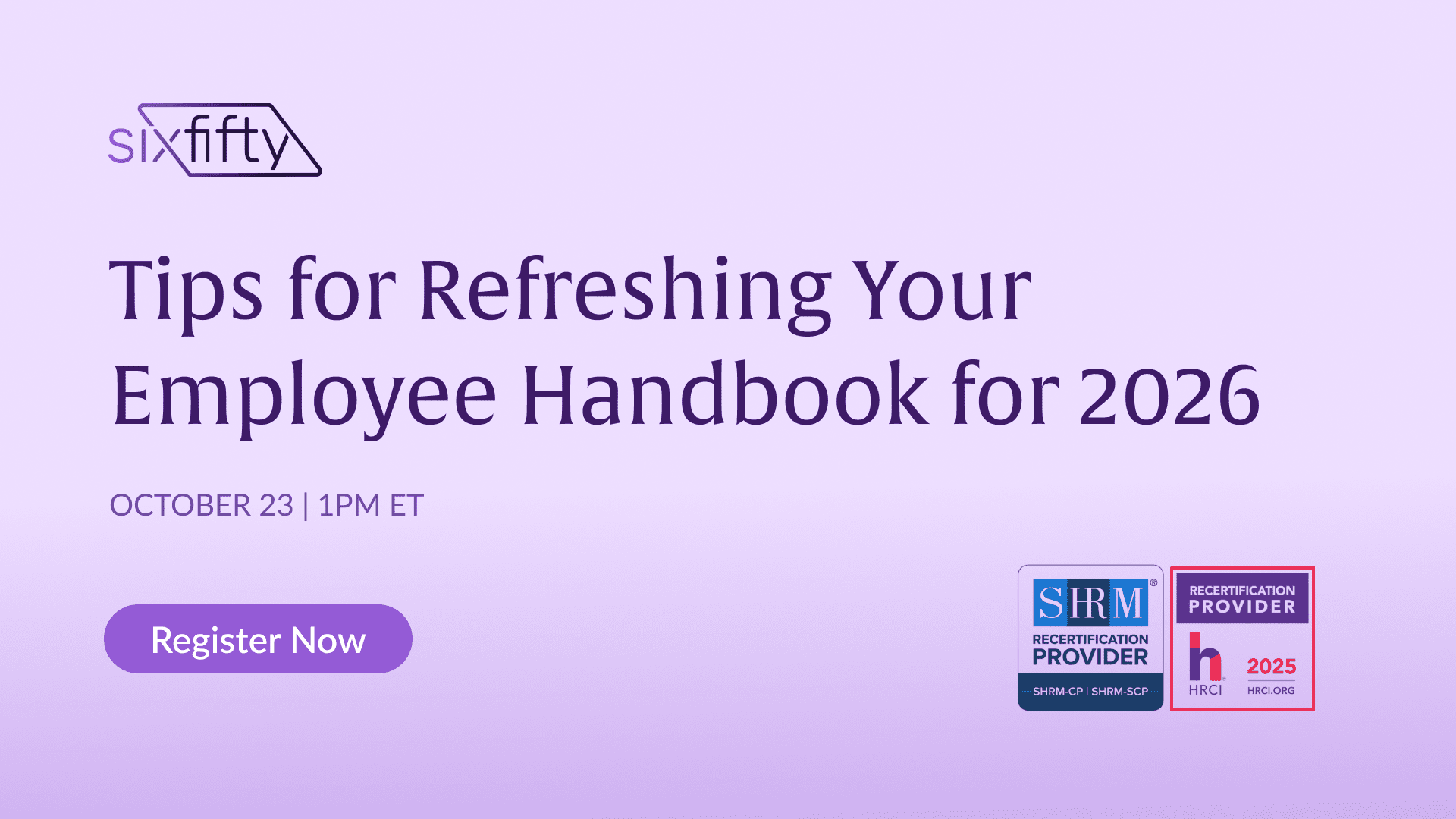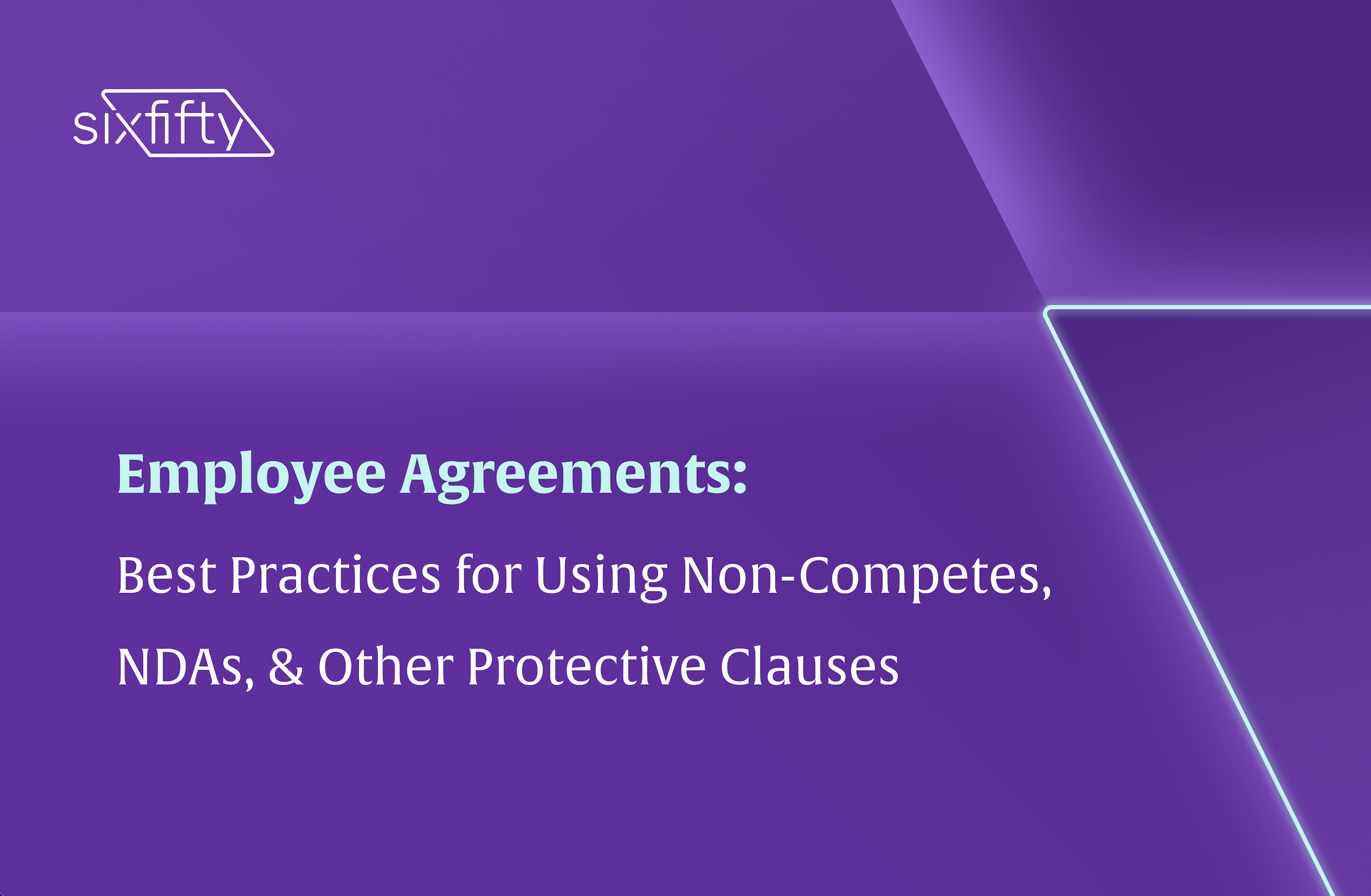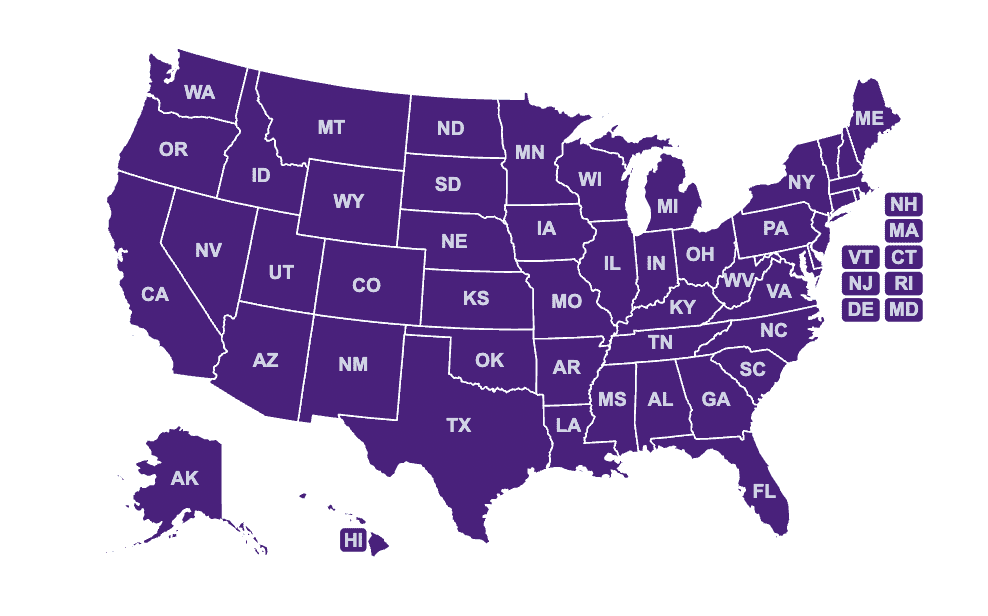Employment Compliance Resources
SixFifty simplifies employment compliance for organizations, HR, and Legal departments. Effortlessly research necessary employment documents, create compliant paperwork, and stay current with evolving regulations through AI-driven legal updates.

Job Duties Policy Guidelines for 2025
Job Duties Policy Guidelines for 2025

Progressive Discipline Policy Guidelines for 2025
Progressive Discipline Policy Guidelines for 2025

Washington D.C. Employee Handbook Requirements (Updated 2025)
Washington D.C. Employee Handbook Requirements (Updated 2025)
This comprehensive document outlines company policies, procedures, and expectations, providing a clear reference point for both employers and employees.

Refreshing Your Employee Handbook: Best Practices for Policies, Structure, and More
Refreshing Your Employee Handbook: Best Practices for Policies, Structure, and More

2025 Employment Law Updates
2025 Employment Law Updates
We’ve tracked and compiled legal updates across all 50 states so you don’t have to.

Employment Agreements: Best Practices for Using Non-Competes, NDAs, and Other Protective Clauses
Employment Agreements: Best Practices for Using Non-Competes, NDAs, and Other Protective Clauses
Employment agreements are complex. As states enact new restrictions on non-competes, NDAs, arbitration clauses, and other protective provisions, HR and legal teams must stay ahead of changing requirements to protect both their organizations and employees.
Join SixFifty legal experts for a practical update on how to use restrictive covenants and other protective clauses.

Understanding the Cost of Employment Law Violations
Understanding the Cost of Employment Law Violations
Until you’ve been around the block as an HR or legal pro, it’s hard to fully grasp the variety of fines, penalties, and liabilities you could face for violating employment law.
For certain areas of the law, even a single infraction in a single state can do massive damage to your company.
Join SixFifty legal experts for a discussion on the real costs of non-compliance—and arm yourself with info you need to get full-buy to invest in compliance.

Employee Political Activity Policy
Employee Political Activity Policy

FAQs: California Workplace Violence Prevention Laws
FAQs: California Workplace Violence Prevention Laws

Salary Threshold Increases for Exempt Employees: 2024 Update
Salary Threshold Increases for Exempt Employees: 2024 Update

FTC Bans Non-Competes: What Employers Need to Know
FTC Bans Non-Competes: What Employers Need to Know

New independent contractor classification rules for 2025
New independent contractor classification rules for 2025

California Non-Compete Laws Get More Strict – 2025 Update
California Non-Compete Laws Get More Strict – 2025 Update

HR Compliance Issues Business Owners Need to Know in 2025
HR Compliance Issues Business Owners Need to Know in 2025

Hiring Hurdles: The Top 3 Most Challenging States for Hiring
Hiring Hurdles: The Top 3 Most Challenging States for Hiring

Telecommuting Policy Guidelines for 2025
Telecommuting Policy Guidelines for 2025
A Telecommuting Policy—also known as a telework policy or remote work policy—is a set of rules and guidelines that an organization establishes to define how employees can work from outside of a traditional office setting.

Workplace Violence Policy Guidelines for 2025
Workplace Violence Policy Guidelines for 2025
A Workplace Violence Policy is a set of guidelines and procedures established by an organization to prevent and address incidents of violence (or threats of violence) that may occur in the workplace.

Cell Phone Policy Guidelines for 2025
Cell Phone Policy Guidelines for 2025
A Cell Phone Policy is a set of written guidelines that define the acceptable use of mobile devices within a specific setting.

Video Conferencing Policy Guidelines for 2025
Video Conferencing Policy Guidelines for 2025
A Video Conferencing Policy is a formal document that outlines the organization’s expectations and regulations regarding the use of video conferencing platforms for business purposes.
